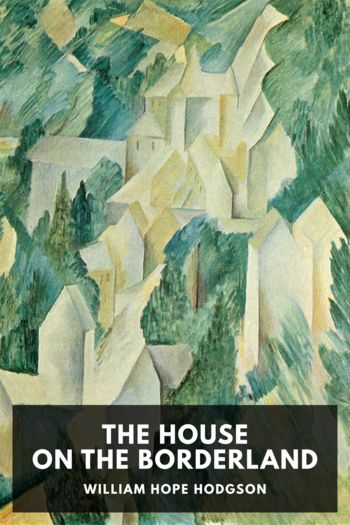Gluck by Diana Souhami (most interesting books to read .TXT) 📗

- Author: Diana Souhami
Book online «Gluck by Diana Souhami (most interesting books to read .TXT) 📗». Author Diana Souhami
As for Nesta, Andrew McIntosh Patrick had told her of Gluck’s death:
January 11th, 1978
Andrew, dear Andrew
How kind you were to tell me. I can never be grateful enough.
It was a great shock.
I’d had a long letter only about 3 days before … I’m not quite sure still exactly when she died. Louis said it was easy, but I wonder –
She was so special wasn’t she? – absolutely maddening – but so loveable!
What will happen to all the pictures she left? I hope you get them. You and Tony made the whole difference to her life. It was a happy ending really – and it could have been, without you – such a sad one.
I’ll see you when I come over –
Love and deep thanks
Nesta
Asked if there was anything of Gluck’s she would like, Nesta replied, ‘Oh, a few of her fine-haired brushes.’
Gluck’s ashes were scattered in her studio garden. As requested in her Will, a thesis was commissioned on her battle to improve artists’ materials and all her papers on it sent to Harvard University. At her request, The Fine Art Society staged a memorial exhibition. It ran for six weeks over the Christmas season in 1980. Again there was a splash of intrigued interest in her life and work. The Sunday Times colour supplement ran a six-page feature on her. The commercial value of her pictures began to rise.
‘I have never yet been able to get from anyone a satisfactory answer to my constant question –’ she wrote to Tony Carroll two years before she died:
What is the link? By what content would one recognise a picture was mine? I, of course am the last person to be able to answer such a question. So?? It will be too late for me when posterity decides.
In her oratorical style she spoke often of the exacting standards she set herself and of the heights to which as an artist she aspired:
… Feel that every work is your last and must say all you can of your feelings whatever your stage of development.… Just as no man shares his finger prints, so no man shares his heart or soul. A11 men are original if they are truthful, even though in that truth we must discern the common root of mankind …
That instant of Vision. That moment when you saw. Even as you look again, it is no more, no, nor ever will be. So it is you who by your emotional awareness and concentration can live for all eternity in a second of time.8
Behind the portentous tone was such a desire to do some ‘good and lovely work before she died. The best of her pictures have a simplicity and directness, a pure sense of harmony and form, a perfectionist use of colour and brushwork. But aspiration and analysis aside, the cool, calm pleasure of her work, all that she left, as proof of having lived – Craig, perched on the rocks in Cornwall, Bettina, adjusting her hat, the gaiety of the Cochran reviews, Constance’s white flowers, Nesta’s face merged with her own at the opera, a patch of convolvulus with a grasshopper perched on it in the garden at Millers Mead, the punt on the lake at the Mill House, the turning tide in Poole Harbour, the sun rising at St Buryan, Edith dozing in the fire warden’s office at one o’clock in the morning – all those moments and more, distilled from her life, have survived her, her proof of having been, the prizes she left behind, as fresh as the moment she perceived them, as undeniably her as the cadence of her voice, her demeanour or her smile.
Image Gallery
Photograph of Gluck by Howard Coster, ‘Photographer of Men’, circa 1924
A.J. Munnings, Drawing of Gluck dressed as a gypsy, 1916. ‘The caravan did not exist, but I did smoke a tiny pipe as shown’
The Old Stable. Gluck’s first Bolton House studio
‘Miss Gluck is the happy possessor of an unspoiled Georgian house and a completely modern and efficient studio.’ The studio, seen from Bolton House, 1936
Edward Maufe’s plan for Gluck’s new studio
Vernon House, Carlyle Square, designed by Oliver Hill, Gluck’s Lilies the only painting in the drawing room
The Gluck Room at The Fine Art Society, 1932
Molly Mount Temple and Gluck at the 1932 exhibition, in front of Broadlands
Gluck in her Bolton House studio, January 1937
Nesta in St. Moritz 1937
Royal Hawaiian Hotel. On the Beach at Waikiki, 1952, Nesta, second left, sits between her husband Seymour and Charlot (to her right)
The Gluck Room at The Fine Art Society, 1937, the walls and frames in pale grey alder wood
A private view. Guests at The Fine Art Society, 1937, in front of White Lilac and Guelder Rose
Waltzing in Lenzerheide, Gluck and Nesta, 1938
‘I have a dog’. Gluck and Zar
Bookplate for the Heald sisters, by Edmund Dulac, showing the Chantry House
Weekend parties with





Comments (0)